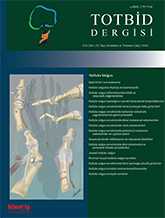
Surgical correction in hallux valgus deformity provides better functional outcomes and patient satisfaction compared to conservative treatment. Among the surgical techniques for correcting the deformity, distal metatarsal osteotomies are commonly preferred. The most important factor in determining surgical approach is congruency of metatarsophalangeal joint. A congruent joint is one where the articulating surfaces of proximal phalanx and metatarsal head are parallel. Surgical procedures should aim to preserve anatomical alignment and joint integrity. In cases of incongruent joints or lateral subluxation, surgical correction should focus on restoring joint congruency. For patients with congruent joints, alternative procedures include the chevron procedure, distal soft tissue procedures, and Akin procedure with medial eminence excision. In incongruent deformities, distal metatarsal osteotomies may be preferred if hallux valgus angle is less than 40° and the intermetatarsal angle is less than 13°. However, these osteotomies may be challenging in the presence of vascular pathologies, neuropathic deformities, a narrow first metatarsal head, intra-articular pain with first metatarsophalangeal arthritis, and major tarsometatarsal instability, as they can negatively affect clinical success. The incision is made close to the junction of the medial plantar and dorsal skin, aiming for a better cosmetic outcome. Various osteotomy types include chevron, Reverdin, Hohmann, Mitchell, Wilson, and derotational abductory transpositional osteotomies. Chevron osteotomy, with its modifications, is currently one of the most commonly used techniques, especially the dorsal long-arm Chevron osteotomy, showing effectiveness in mild to moderate deformities. Percutaneous techniques represent a trend towards minimally invasive procedures, showing promising clinical outcomes but still in the developmental stage.